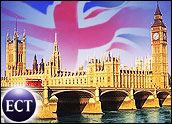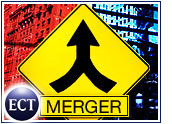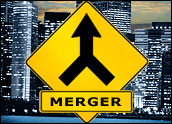
The Investors’ and Issuers’ Summit on Alternative Capital Raising Strategies Conference recently took place at The Harvard Club in New York. Several companies representing the reverse merger sector attended the Financial Research Associates-sponsored conference, which was geared toward alternative ways for companies to go public.
Several notable speakers, including yours truly, reviewed the specific vehicles that can be used to go public along with the challenges companies are facing. All of the speakers agreed that the two main problems confronting small cap companies in today’s environment were 1.) the lack of broker dealers to underwrite deals and 2.) how to tap the nearly 30 million investors who have self-directed brokerage accounts at such places as E*Trade, Fidelity, Scottrade, Schwab and TD Ameritrade.
Some Startling News
There is no doubt where the traditional IPO (initial public offering) marketplace is heading. With the standard underwriting of an IPO averaging US$229 million in 2007, it is clear most underwriters have taken the flight to safety and are only doing deals for companies that approach billion dollar valuations.
This point was further illustrated when in the first quarter of 2008, according to IPOHome.com, only 22 companies went IPO versus 53 companies for the first quarter of 2007. The startling news is the average capital raise exceeded $1 billion per deal compared with $186 million for the first quarter of 2007. While the number of IPOs dropped by more than 50 percent, the amount of capital raised per deal was fivefold in the first quarter.
This explains why it is so difficult for small cap companies to go public: The deals are too small to attract an underwriter! The conference speakers addressed the alternatives companies could take to become publicly traded, with the main topics being S-1 registrations, listing on the Alternative Investment Market London Stock Exchange, Form 10 Shells, reverse mergers into an OTCBB (Over the Counter Bulletin Board) shell and China based companies.
S-1 Registrations
The S-1 registration statement has recently replaced the SB2 registration statement. The S-1 is used for companies that are seeking to go public via a self-underwritten or direct public offering (DPO). The DPO process from start to finish usually takes anywhere from nine to 18 months, depending on the complexity of your filing and the number of comments you receive from the SEC. If you are a U.S.-based development stage company with little or no revenue or a company with no profits, then the S-1 is your best choice for going public.
The S-1 will take longer to complete, but it will save you hundreds of thousands of dollars compared with buying an OTCBB shell. The average cost of attorney fees for an S-1 for a development stage company averages $100,000 with additional fees if SEC comments persist. You will still need a PCAOB (Public Company Accounting Oversight Board) audit of your company’s records, which will cost an average of $50,000.
A company’s current status will determine which course of action to take when it comes to going public. I suggest an S-1 registration statement over a reverse merger when the company is a startup or still in the developmental stage process (non-revenue-producing). The reasons are as follows:
- Most startups need to conserve their finances for developing their company.
- The price differential between an S-1 and a reverse merger are substantial. An S-1 will cost under $200,000; a reverse merger, $700,000 to $1 million.
- It is difficult to raise capital for a startup. By taking the S-1 route, a company can raise an initial small round of funding and gather the 30-plus shareholders it will need to qualify for trading status when it files its 15c2-11 with FINRA (Financial Industry Regulatory Authority). After the company is public, it can later seek a more substantial second round of funding.
Exploring AIM
One conference topic was alternative listing strategies, such as the AIM London Stock Exchange. I have written a series on this subject and covered its merits in depth. The plus side is their regulatory requirements are rather lax compared with the U.S. Securities and Exchange Commission and Sarbanes-Oxley compliance. However, the biggest problem with companies listed on AIM is their limited U.S. exposure and apparent liquidity issues.
U.S. investors have shown very little interest in AIM-listed companies in the past, and I doubt that will change in the near future. If your company is listed on AIM and a second round of funding is necessary, plan on spending a substantial amount of time in Europe trying to raise capital. Very few U.S.-based funds will entertain an investment on an AIM-listed company.
Form 10 Shells
The conference had several speakers addressing issues concerning reverse mergers and Form 10 shells. Form 10, or “virgin shells” as they are sometimes called, consist of a blank check S-1 that has been reviewed by the SEC. The Form 10 shell does shorten the SEC review process — but not by much.
A company still has to back into the Form 10 shell and go through the entire review process with the SEC, find a minimum of 30 shareholders, and apply to FINRA to gain trading status. This process will cost somewhere between $150,000 and $200,000 plus audit fees. Recently, Form 10 shells have been used as a vehicle for qualified companies to go public and simultaneously gain listing on the American Stock Exchange. For U.S.-based companies with a history of substantial revenues and profits, this is the best vehicle.
OTCBB Shells
By comparison, a reverse merger into an OTCBB shell is quicker but quite a bit more expensive. Costs can run from $700,000 to almost $1 million. If your company is 1.) established 2.) profitable and 3.) there is immediate interest from funding sources, then a reverse merger is the way to go.
If you need immediate access to the capital markets or you have a foreign company and you are trying to gain entry into U.S. markets, a reverse merger is definitely the way to go. You can literally be public in 30 days.
A Look at China
During the conference, there was much discussion about Chinese companies seeking listing on the OTCBB. Last year, 69 companies originating out of China did a reverse merger into an OTCBB shell. There are a tremendous number of those private companies that are looking to U.S. markets to gain much needed access to capital.
By reversing into a shell, China-based companies can provide not only transparency but also liquidity to investors. Most of the deals coming out of China have substantial revenues and profits combined with low valuations. These types of deals have inherent risks attached to them but the upside, in my opinion, is well worth the risk.
There is still tremendous growth in China that will last until 2020. This will result in an influx of China-based companies seeking access to our U.S. financial markets. I predict we will see a substantial increase in the number of China-based companies seeking reverse mergers in the next several years. There is a multitude of information I could share with investors about companies coming out of China, but I will save that topic for another day.
Ralph Amato is founder and CEO of Ventana Capital Partners, which specializes in reverse shell mergers. He can be reached at [email protected].

















































Social Media
See all Social Media